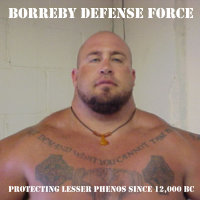0















| Thumbs Up |
| Received: 3,437 Given: 1,436 |













| Thumbs Up |
| Received: 3,437 Given: 1,436 |













| Thumbs Up |
| Received: 1,673 Given: 882 |

Depends on what native means in this regard. I1 didn't exist in Finland until the arrival of Proto-Germanics during the IA. That is certain atleast.
Some I1 clades are from proto-Norse speakers such as the Levanluhta outlier who clusters with modern day Norwegians. Other clades are nested within the modern Swedish diversity, probably a spread from Sweden to western Finland which has elevated Scandinavian ancestry when Finland was under the Swedish crown.


















| Thumbs Up |
| Received: 21,067 Given: 39,632 |



| Thumbs Up |
| Received: 13,023 Given: 2,190 |

Old North Europeans ... anyway.


















| Thumbs Up |
| Received: 21,067 Given: 39,632 |

I2 is also found in Normans especially those in from Sicily, R1b did exist in Scandinavia and probably at it's highest frequency in Sweden and the continental part of Denmark but after the expulsion of the Jutes, Anglos and Saxons I can't imagine there was a super large population. The Scandinavians also were privy to adopting clans, people and tribes so it's really hard to say. Your article puts it perfectly that R1b isn't typical but we can't be sure. The Vikings weren't a singular group of people, there were Vikings of Slavic origin, Celtic etc. Vikings weren't typical people; most were ex-slaves, outcasts, criminals, capitalists etc. The Normans in particular came from all walks of life, they adopted tons of people into coalition and were known for making up origin stories for their adoptees. Like in Kieven Rus, they were seen as a means to unify and or change the system; their benefit wasn't only to themselves; they really enriched and leveled out the dynamics of the previous powers.


















| Thumbs Up |
| Received: 21,067 Given: 39,632 |













| Thumbs Up |
| Received: 3,437 Given: 1,436 |
There are currently 1 users browsing this thread. (0 members and 1 guests)
Bookmarks